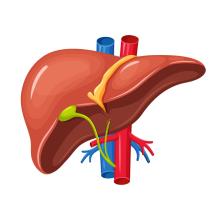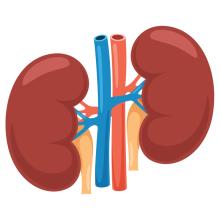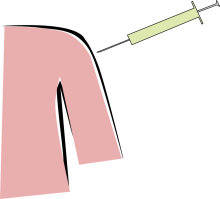חדשות המחקר

David Karasik: A variability in response of osteoclasts to zoledronic acid is mediated by smoking-associated modification in the DNA methylome (Clin Epigenetics . )
Clinical trials have shown zoledronic acid as a potent bisphosphonate in preventing bone loss, but with varying potency between patients. Human osteoclasts ex vivo reportedly displayed a variable sensitivity to zoledronic acid > 200-fold, determined by the half-maximal inhibitory concentration (IC50), with cigarette smoking as one of the reported contributors to this variation. To reveal the molecular basis of the smoking-mediated variation on treatment sensitivity, we performed a DNA methylome profiling on whole blood cells from 34 healthy female blood donors. Multiple regression models were fitted to associate DNA methylation with ex vivo determined IC50 values, smoking, and their interaction adjusting for age and cell compositions.

Rola Khamisy-Farah, Maher Endrawis, Marwan Odeh, Ruba Tuma: Knowledge of Human Papillomavirus (HPV), Attitudes, and Practices Towards Anti-HPV Vaccination Among Israeli Nurses (J Cancer Educ .)
Human papillomavirus (HPV) is a small, non-enveloped, double-stranded DNA virus, belonging to the family of Papillomaviridae. It is a highly common infectious agent, which causes one of the most widespread sexually transmitted infections (STIs), involving approximately 20% of sexually active female adolescents and up to 80% of female adults aged 50 years. There exist two major preventative strategies: namely, anti-HPV vaccination and cervical screening. Healthcare providers, including nurses, can play a crucial role in HPV immunization campaigns, counteracting vaccine hesitancy and doing advocacy and counseling...This study has important implications for policy- and decision-makers in that they should be aware of the overall poor and unsatisfactory level of HPV-related knowledge among Israeli nurses and implement multipronged HPV vaccine promotion programs, taking into account the challenges of a multicultural and diverse society like Israel.

Lihi Grinberg, Fadwa Dabbah Assadi, Gideon Baum, Ran Tur-Kaspa, Chen Shochat, David Karasik, Marcela V Karpuj: Beneficial Effect of Vitamin D on Non-Alcoholic Fatty Liver Disease (NAFLD) Progression in the Zebrafish Model (Nutrients .)
A major cause of chronic liver disease, cirrhosis, and hepatocellular carcinoma, non-alcoholic fatty liver disease (NAFLD) results from excessive liver fat accumulation. Vitamin D (VitD) plays multiple important roles in diverse physiologic processes. Here, we describe the role of VitD in the complex pathogenesis of NAFLD and explore the possible therapeutic role of VitD supplementation in NAFLD therapy.

Alaa Abu-Saleh, Lior Feintuch, Adi Shani, Nimrod Rahamimov: Insertion of a urinary catheter on admission lowers acute kidney injury incidence in patients with hip fractures (Int Orthop . )
Acute kidney injury (AKI) is a common adverse event in patients undergoing hip fracture repair surgery, increasing morbidity and mortality. Our study hypothesis was that routine insertion of a urinary catheter, on admission to the hospital or immediately before surgery, will reduce AKI incidence in hip fracture patients.

Nasser Sakran, Bassel Haj, Salma Abo Foul, Ali Awad, Jabra Arraf, Abdallah Omari, Mohamad Hamoud: Standardization of the One-anastomosis Gastric Bypass Procedure for Morbid Obesity: Technical Aspects and Early Outcomes )Surg Laparosc Endosc Percutan Tech
One-anastomosis gastric bypass (OAGB) has become an accepted metabolic/bariatric surgery procedure. This study aimed to describe our center's standardized OAGB operative technique and report early (≤30 d) safety outcomes in patients with severe obesity.

Khalaf Kridin: Pruritus Is Associated with an Increased Risk for the Diagnosis of Autoimmune Skin Blistering Diseases: A Propensity-Matched Global Study (Biomolecules .)
Autoimmune bullous skin diseases (AIBDs), such as bullous pemphigoid (BP) and pemphigus, are characterized and caused by autoantibodies targeting structural proteins. In BP, clinical experience and recent systematic evaluation identified pruritus to be common and an important cause of impaired quality of life. Furthermore, chronic pruritus may be the sole clinical symptom of BP. In pemphigus, a retrospective study recently documented a high prevalence of pruritus. The temporal relation between pruritus and BP/pemphigus are, however, unknown. Likewise, the presence of pruritus in AIBDs other than BP and pemphigus is unknown. To address this, we performed propensity-matched retrospective cohort studies using TriNetX, providing real-world patient data to (i) assess the risk to develop AIBDs following the diagnosis of pruritus and (ii) vice versa.

David Karasik: Proceedings of the Post-Genome Analysis for Musculoskeletal Biology Workshop (Curr Osteoporos Rep .)
Herein, we report on the proceedings of the workshop entitled "Post-Genome analysis for musculoskeletal biology" that was held in July of 2022 in Safed, Galilee, Israel. Supported by the Israel Science Foundation, the goal of this workshop was to bring together established investigators and their trainees who were interested in understanding the etiology of musculoskeletal disease, from Israel and from around the world.

D Krupik: Willingness to vaccinate children against COVID-19 declined during the pandemic (Vaccine .)
Objectives: To document the level of vaccine hesitancy in caregivers' of children younger than 12 years of age over the course of the pandemic in Pediatric Emergency Departments (ED).

The Prognostic Value of Cardiovascular Risk Factors and Laboratory Biomarkers in Predicting 6-Month Outcomes in High-risk Patients with Non-ST Segment Elevation Myocardial Infarction (Isr Med Assoc J .)
Acute coronary syndrome (ACS) represents a spectrum of ischemic myocardial disease including unstable angina (UA), non-ST-segment elevation myocardial infarction (NSTEMI), and ST-elevation myocardial infarction (STEMI). Various prognostic scores were developed for patients presenting with NSTEMI-ACS. Among these scores, the GRACE risk score offers the best discriminative performance for prediction of in-hospital and 6-month mortality. However, the GRACE score is limited and cannot be used in several ethnic populations. Moreover, it is not predictive of clinical outcomes other than mortality. Objectives: To assess the prognostic value of traditional cardiovascular risk factors and laboratory biomarkers in predicting 6-month major adverse cardiac and cerebrovascular events (MACCE), including hospitalization, recurrent percutaneous coronary intervention (PCI), stroke, and cardiovascular mortality in patients with NSTEMI treated with PCI.
(Alla Lubovich, Mariana Issawy, Liza Grosman-Rimon, Fabio Kusniec, Ibrahim Marai, Doron Sudarsky, Edo Y Birati, Offer Amir, Shemy Carasso, Gabby Elbaz-Greener)

William Nseir: Nonalcoholic Fatty Liver Disease as a Risk Factor for Severe Cholangitis (Isr Med Assoc J . )
Nonalcoholic fatty liver disease (NAFLD) is one of the most prevalent chronic liver disorders. Acute cholangitis (AC) is a life-threatening illness. Objectives: To determine whether NAFLD is a risk factor for the severity of AC.

Sivan Spitzer: Opportunities for psychologists to advance health equity: Using liberation psychology to identify key lessons from 17 years of praxis (Am Psychol . )
Health and health care inequities persist because the efforts to eliminate them have ignored structural racism, typically using a power neutral approach to diagnose and solve the problem. Critical theory can address many of the conceptual weaknesses of current approaches, help identify how racism operates in health care, and open the door for more effective individual employee and organizational actions to advance health equity. We apply Martín-Baró's (1996) liberation psychology to lessons we learned through implementing a transdisciplinary national health and health care equity program.

Hanna Keren: A highly replicable decline in mood during rest and simple tasks (Nat Hum Behav .)
Does our mood change as time passes? This question is central to behavioural and affective science, yet it remains largely unexamined. To investigate, we intermixed subjective momentary mood ratings into repetitive psychology paradigms.

Khalaf Kridin: Reply to: "Interpreting with Caution the Lack of Association between Isotretinoin, Depression, and Suicide" (J Am Acad Dermatol . )
Refers to: "Interpreting with Caution the Lack of Association between Isotretinoin, Depression and Suicide"

Arnon Blum: Gender differences in vascular ageing and in coronary artery disease pathophysiology (QJM .)
Women have a clinical advantage over men in relation with atherosclerotic cardiovascular disease [CVD] (morbidity and mortality). This advantage disappears once women become older, and on their 7th decade the risk to develop CVD equals men at that age. There have been several theories about this gender difference that were related to hormones, and the different morphology and physiology that characterize the cardiovascular system in women. In this review the different mechanisms will be reviewed and discussed.

Michael Edelstein: Linked poliovirus incidents in the UK, USA and Israel: Silent transmission or missed warnings of vaccine inequity? (Vaccine .)
Several poliovirus incidents were reported in high-income countries (HIC) in 2022, which have required large-scale public health responses. Strategies to address persistent disparities in childhood vaccination coverage will be crucial to prevent and control circulation, and sustain elimination in HIC.



